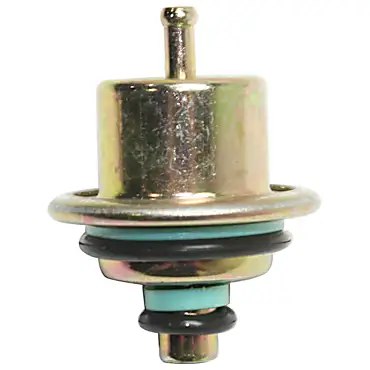Answer

Aug 20, 2024 - 11:02 PM
Hello there!
The fuel pressure regulator (FPR) on a 2000 Chevrolet S10 is typically located at one end of the fuel rail, just below or close to the intake manifold. In some cases, especially with returnless fuel systems, it might be integrated into the in-tank fuel pump.
Replacing the Fuel Pressure Regulator:
Tools: A socket wrench, ratchet, and extension, as well as pliers or a fuel line disconnect tool.
1.) Safety First: Make sure to work in a well-ventilated area away from any heat sources.
2.) Relieve Fuel Pressure: Before starting, relieve the fuel system pressure. You can do this by removing the fuel pump fuse and running the engine until it stalls.
3.) Disconnect the Battery: Always disconnect the negative terminal of the battery to avoid any electrical issues.
4.) Access the FPR: Depending on your setup, you may need to remove some components to gain access to the fuel rail.
5.) Remove the Fuel Line: Use a 24mm wrench to disconnect the fuel line from the regulator. Be prepared for some fuel spillage, so have a rag handy.
6.) Unbolt the FPR: The FPR is usually held in place by a T30 torque head bolt. Use the appropriate tool to remove this bolt.
7.) Replace the FPR: Take out the old regulator and replace it with the new one. Make sure to connect any vacuum hoses properly.
8.) Reassemble: Reattach the fuel line, bolt everything back in place, and reconnect the battery.
9.) Test for Leaks: Turn the ignition to the "on" position (without starting the engine) to prime the fuel system and check for leaks around the regulator.
10.) Start the Engine: Finally, start the engine and ensure it runs smoothly.
This process can take about an hour, depending on your experience and the tools you have available. Be patient, as space can be tight, and working around the engine can be tricky.
You may need some parts in the process, click this link to be directed to our website where your vehicle information has already been entered. Simply enter the part's name into the search field to get started.
Good luck and happy wrenching!
The fuel pressure regulator (FPR) on a 2000 Chevrolet S10 is typically located at one end of the fuel rail, just below or close to the intake manifold. In some cases, especially with returnless fuel systems, it might be integrated into the in-tank fuel pump.
Replacing the Fuel Pressure Regulator:
Tools: A socket wrench, ratchet, and extension, as well as pliers or a fuel line disconnect tool.
1.) Safety First: Make sure to work in a well-ventilated area away from any heat sources.
2.) Relieve Fuel Pressure: Before starting, relieve the fuel system pressure. You can do this by removing the fuel pump fuse and running the engine until it stalls.
3.) Disconnect the Battery: Always disconnect the negative terminal of the battery to avoid any electrical issues.
4.) Access the FPR: Depending on your setup, you may need to remove some components to gain access to the fuel rail.
5.) Remove the Fuel Line: Use a 24mm wrench to disconnect the fuel line from the regulator. Be prepared for some fuel spillage, so have a rag handy.
6.) Unbolt the FPR: The FPR is usually held in place by a T30 torque head bolt. Use the appropriate tool to remove this bolt.
7.) Replace the FPR: Take out the old regulator and replace it with the new one. Make sure to connect any vacuum hoses properly.
8.) Reassemble: Reattach the fuel line, bolt everything back in place, and reconnect the battery.
9.) Test for Leaks: Turn the ignition to the "on" position (without starting the engine) to prime the fuel system and check for leaks around the regulator.
10.) Start the Engine: Finally, start the engine and ensure it runs smoothly.
This process can take about an hour, depending on your experience and the tools you have available. Be patient, as space can be tight, and working around the engine can be tricky.
You may need some parts in the process, click this link to be directed to our website where your vehicle information has already been entered. Simply enter the part's name into the search field to get started.
Good luck and happy wrenching!





Add New Comment